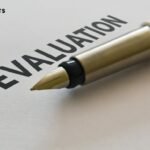Introduction
Navigating the U.S. immigration system can feel daunting. However, many individuals have successfully secured their permanent residency through the EB2 NIW pathway. The EB2 NIW, or Employment-Based Second Preference National Interest Waiver, offers a unique opportunity for qualified professionals to immigrate to the U.S. without the need for employer sponsorship. This article will explore success stories, discuss the requirements, and outline the typical processing time.
Understanding the EB2 NIW
What is the EB2 NIW?
The EB2 NIW allows skilled workers, professionals, and researchers to apply for U.S. permanent residency. This route is distinct because it waives the need for a job offer or labor certification. Applicants must demonstrate that their work benefits the U.S. national interest.
Who Qualifies for the EB2 NIW?
To qualify for this program, applicants must meet specific criteria:
- Educational Background: A master’s degree or a bachelor’s degree with five years of progressive work experience in their field.
- Exceptional Ability: Evidence of significant achievements or contributions in their area of expertise.
- National Interest: The applicant’s work must be beneficial to the U.S. in areas such as economic growth, cultural enrichment, or healthcare.
Requirements for a Successful Application
To successfully navigate the EB2 NIW process, applicants must fulfill several key requirements. Here’s a closer look:
- Educational Credentials: Hold an advanced degree or its equivalent.
- Evidence of Exceptional Ability: Provide proof through publications, awards, or other recognitions.
- National Interest Justification: Present a strong case demonstrating how their work serves the U.S. national interest.
Success Stories of EB2 NIW Applicants
Many individuals have transformed their dreams of living and working in the U.S. into reality through this program. Let’s explore a few inspiring success stories.
Story 1: The Biomedical Researcher
Dr. Ana Lopez, a biomedical researcher from Brazil, faced challenges in her home country. She held a Ph.D. and specialized in cancer research. Dr. Lopez applied after showcasing her research contributions to cancer treatment. Her work had the potential to save countless lives.
She presented published articles, international conference presentations, and her collaborative work with U.S. institutions. Within eight months, she received her green card. Dr. Lopez now works in a leading U.S. research facility, contributing to groundbreaking cancer treatments.
Story 2: The Software Engineer
John Kim, a software engineer from South Korea, dreamed of working in Silicon Valley. He held a master’s degree and had developed several innovative applications. John understood the potential of his work in advancing technology in the U.S.
He gathered evidence of his accomplishments, including patents and industry awards. John also detailed how his software solutions could enhance efficiency in various sectors. His application was approved in less than a year. John now contributes to significant tech projects and enjoys life in the U.S.
Story 3: The Environmental Scientist
Maria Gonzalez, an environmental scientist from Mexico, focused on sustainable agriculture. She aimed to implement eco-friendly farming practices in the U.S. Maria’s qualifications included a master’s degree and years of experience in environmental conservation.
She demonstrated the importance of her work in combating climate change. Maria’s application highlighted her collaborations with U.S. organizations. Within ten months, she achieved her green card. Today, she leads initiatives promoting sustainable agriculture in the U.S.
Navigating the Application Requirements
Step-by-Step Guide to Meeting Requirements
- Assess Your Qualifications: Review your educational and professional background. Ensure you meet the necessary criteria for the program.
- Gather Supporting Documents: Compile evidence of your achievements, including degrees, publications, and awards.
- Prepare a Strong Case for National Interest: Clearly articulate how your work benefits the U.S. Use statistics, expert opinions, and case studies.
- File Your Petition: Submit your I-140 petition with all supporting documentation. Consider working with an immigration attorney for guidance.
Common Mistakes to Avoid
- Incomplete Documentation: Ensure all required documents are included. Missing information can delay processing.
- Weak National Interest Argument: Clearly articulate the impact of your work. Avoid vague statements; use concrete examples.
- Failure to Follow Instructions: Adhere strictly to USCIS guidelines. Any deviation can lead to rejection.
Understanding Processing Time
What is the Processing Time?
The processing time for the EB2 NIW application varies based on several factors. On average, applicants can expect a timeline of 6 to 12 months from filing the I-140 petition to receiving approval. However, processing times can fluctuate based on the volume of applications and specific USCIS service centers.
Factors Influencing Processing Time
Several factors can impact how quickly your application is processed:
- USCIS Service Center: Different centers may have varying processing speeds.
- Case Complexity: More complex cases with extensive documentation may take longer to review.
- Backlogs: High application volumes can lead to delays. It’s essential to stay informed about current processing times.
Tips for Expediting Processing
- File a Complete Application: Ensure all documents are correct and included. A complete application can prevent delays.
- Respond Promptly to Requests for Evidence: If USCIS requests additional information, respond quickly. Timely responses can keep your application moving.
- Consider Premium Processing: For an additional fee, premium processing guarantees a decision within 15 calendar days for eligible petitions.
The Importance of a Strong Network
Building a professional network can significantly enhance your application process. Connect with peers, mentors, and industry leaders in your field. A robust network can provide support, advice, and potential collaboration opportunities. Additionally, recommendations from established professionals can strengthen your case, emphasizing the impact of your work on the U.S. national interest.
Engaging with the Community
Engagement with the community can also bolster your profile. Participate in conferences, workshops, and seminars related to your field. Volunteering for relevant organizations demonstrates commitment to your area of expertise. It also showcases your dedication to making a positive impact in the U.S., further strengthening your application.
Conclusion
The pathway to securing U.S. permanent residency through the EB2 NIW offers a promising route for skilled professionals. Through compelling success stories, we see that individuals from diverse backgrounds can achieve their dreams. By understanding the requirements and navigating the processing times, you can enhance your chances of success. With careful planning and a strong application, your journey to U.S. residency can be a reality.




